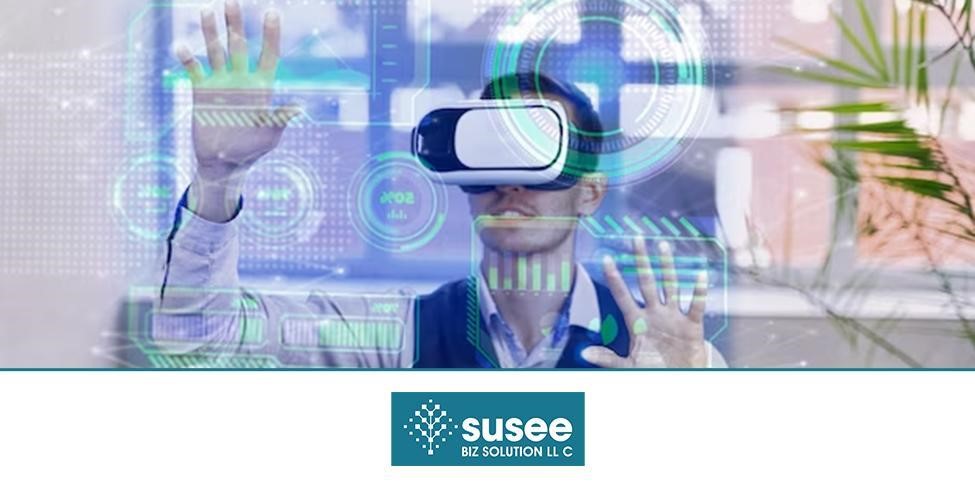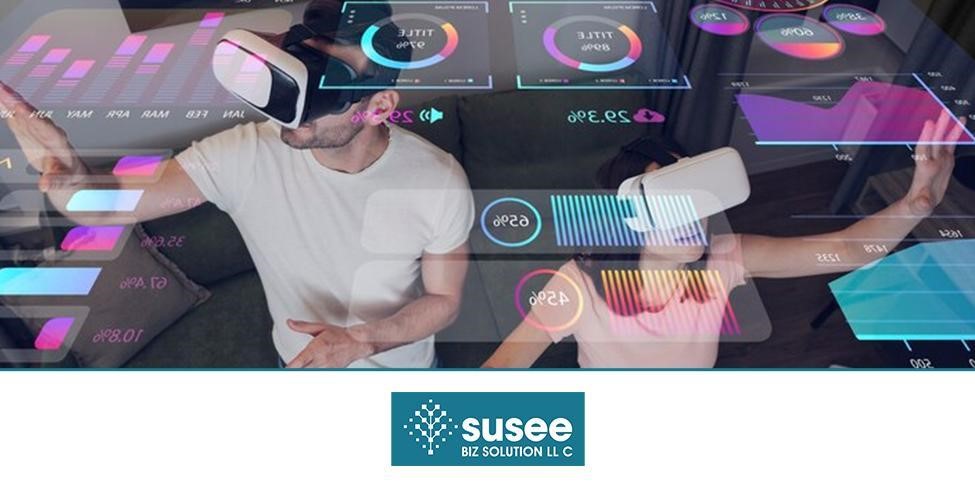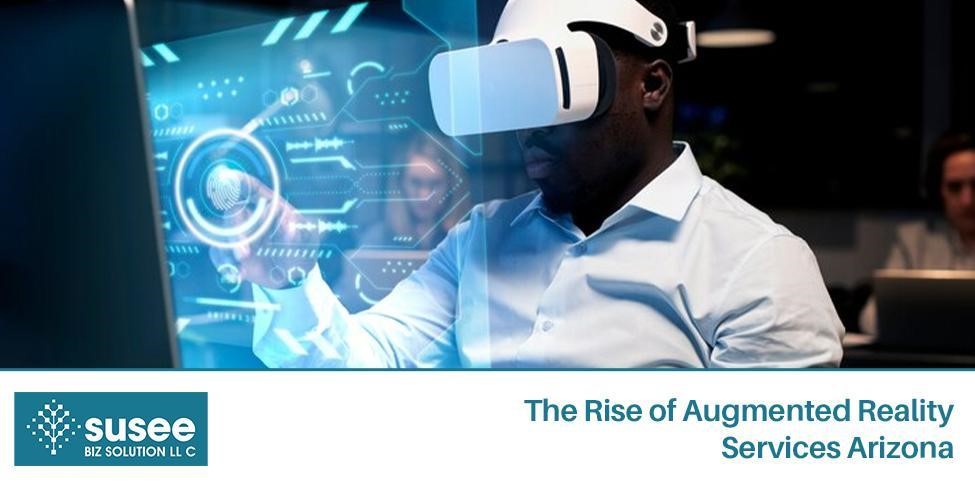Technological Scene of Arizona
The American Southwest, Arizona emerges not just as a place with stunning scenery but also as a fast-growing technology hub. With its famous landscapes and deserts, Arizona is experiencing an incredible transformation of the technological terrain. One of the most significant aspects of this change is the astonishing rise in augmented reality services Arizona.
Defining Augmented Reality and Its Growing Influence
Augmented reality is an innovative technique that overlays digital data in the real world, providing users with a more immersive experience. In Arizona, the technology that is changing lives is gaining ground that is weaving itself into different sectors and daily activities.
It is essential to understand the dynamic technological ecosystem of Arizona. The state is home to a variety of industries, including healthcare, tourism, and more as the Arizona economy is poised to make use of the most modern technology. The state’s cities, which include Phoenix and Tucson, where both startup as well as rooted tech companies, help create a flourishing technology industry.
Augmented reality services Arizona aren’t just tech innovations but are catalysts for advancement and innovation in healthcare, education, tourism, and other areas. From enhancing the experience for visitors at iconic sites to revolutionizing medical education in healthcare facilities, AR is leaving a lasting impression on Arizona.
The Arizona AR Revolution
In the heart of the Sonoran Desert, a technological revolution is taking place called the Arizona AR Revolution. Arizona’s vibrant landscape isn’t restricted to its natural beauty. Still, it extends to the realm of AR and tech hubs, where tech hubs and startups in Arizona are using the latest technological tools.
Spotlights on Tech Hubs

Startups are emerging as the pioneers in using this new technology, turning concepts into practical applications that change the way we interact and experience the world. These startups, led by entrepreneurial visionaries, are using AR to tackle issues and enhance experiences across various industries.
Tech hubs in Arizona, including the ones located in Phoenix and Tucson, are the ideal places to foster creative thinking and collaboration. These hubs provide an environment that allows AR designers, developers, and other enthusiasts to meet to share ideas, exchange their expertise, and expand the boundaries of technology together. The synergy of these hubs increases the potential of AR and creates a vibrant community that goes beyond each startup.
Key Players in The Augmented Reality Scene
Key players in the augmented reality scene have also played a pivotal role in shaping Arizona’s AR landscape. Industry giants and innovative companies alike have recognized the state’s potential as a hub for AR tech. Their involvement has accelerated the adoption of AR technologies, paving the way for collaborative ventures that harness the full spectrum of AR’s capabilities.
Applications Across Industries
In the desert landscapes of Arizona, AR-based applications are creating a web of technological innovation that spans various industries, altering how we perceive and interact in the global world. From the famous Grand Canyon to the bustling cities of Phoenix, AR has left an imprint on Arizona, enriching experiences and changing traditional practices.
AR in Tourism
In the field of tourism, AR is an effective way to enrich visitors’ experiences. With apps like interactive maps, overlays of historical information, and immersive narratives, visitors are now able to explore Arizona’s rich natural and cultural heritage. Augmented reality services for the tourism industry in Arizona aren’t solely about information. It’s about creating unforgettable and enjoyable moments that are remembered even after the trip has ended.
Education and Training
The field of education and training has undergone an evolution that has been revolutionary thanks to the integration of AR into the curriculum. In Arizona’s universities, AR is no longer limited to classrooms and textbooks; it’s become a thriving device for enhancing learning experiences. Students can learn about ancient civilizations using AR-enhanced history lessons, examine the anatomy of living organisms within biology lessons, or engage with interactive games that connect the gap between theory and application.
AR’s Impact on Medical Practices
The healthcare sector in Arizona is experiencing a transformation that is being driven by AR developments. In everything from surgical plans to education, Augmented reality is improving precision and effectiveness. Surgeons can see complex procedures using holographic overlays. Medical students are able to practice in virtual environments that resemble the real-world scenario. This does not just improve the patient’s experience but also aids in the advancement of medical knowledge within the state.
Real Estate and Architecture

In the dynamic world of architecture and real estate, AR is visualizing the future of design and property showcase. Potential buyers can utilize AR apps to visualize the furniture layout and design inside a home. Architects can apply virtual models to physical spaces, which allows for more efficient and collaborative design. Augmented reality solutions in Arizona’s real estate market provide more accurate and immersive decision-making.
Challenges and Opportunities
As Arizona is leveraging augmented reality services and experiences, it faces a range of issues and opportunities that will determine the course in this new technological revolution. A major obstacle is dealing with the technical issues associated with the implementation of Augmented Reality.
Addressing Technical and Ethical Concerns
On the technical side, making sure seamless integration, cybersecurity, and wide accessibility are major problems. As the demand for augmented reality services in Arizona increases, as does the need for standard protocols and interoperability will become more important. In addition, ethical issues, including privacy concerns for users and the security of data, demand attentiveness to ensure the public’s trust in this revolutionary technology.
However, within these issues are numerous opportunities for collaboration and growth. The tech industry in Arizona is poised to develop solutions to technical problems in order to establish its position as a center for AR excellence. Collaboration between the government, as well as industry leaders and entrepreneurs, can provide a favorable environment for the development of new ideas while encouraging a team method of problem-solving.
Opportunities for Growth and Collaboration
Economically, the integration of Augmented Reality services Arizona offers a distinct opportunity. The advancement and application of AR technologies can spur employment by attracting highly skilled professionals and increasing the state’s standing as a technology powerhouse. Collaboration between private and public sectors could also result in the building of centers for research and development focused on AR centers and further establishing Arizona’s place at the forefront of technology advancement.
Furthermore, the economic impact goes beyond the creation of jobs. Augmented Reality services Arizona are able to draw investment, thereby driving economic growth in a variety of sectors. Businesses that take advantage of AR technologies could benefit from competitive advantages, and the state could be seen as an innovator in the pursuit of technological innovation and advancement.
Case Studies
Businesses are introducing new technological innovations by successfully implementing Augmented Reality applications. These case studies don’t just demonstrate the transformational capabilities of AR services but also present useful lessons from the failures and adaptations, forming the future of technological integration within Arizona.
Successful AR Implementations in Arizona Businesses
Many businesses in Arizona utilize AR to improve customer experience as well as streamline their operations to remain ahead of the curve in a constantly changing market. One of the most compelling examples is in the tourism industry, in which landmarks such as The Grand Canyon are utilizing AR to give visitors rich historical stories and interactive guides to trails. These innovations not only enhance the experience of visitors but also aid in the preservation of the natural and cultural heritage.
In the retail sector, Arizona-based businesses are using AR to create virtual experiences that allow customers to experience the products prior to making a purchase. This not only reduces the possibility of returning products but also provides a memorable and customized shopping experience.
Healthcare is seeing success with AR integrations, too. Medical institutions are using AR to plan surgical procedures, which allows for more precise and efficient procedures. Patients are able to benefit from individualized treatment plans, and healthcare professionals have access to live information via AR interfaces, which ultimately improves patient outcomes.
Lessons Learned: Failures and Adaptations in AR Ventures
Although there are many success stories, the process of AR acceptance in Arizona is also characterized by failures, as well as valuable lessons. Some businesses initially faced difficulties with regard to user acceptance and the design of interfaces. In the retail space, as an example, there were occasions when AR applications were too complicated for customers and led to a revision of the design principles.
In addition, concerns related to the privacy and security of data have become major. Businesses realized that establishing the trust of their users requires strong measures to safeguard personal data and ensure the ethical use of AR technology.
However, failures were met with resiliency and the ability to adapt. Arizona companies have demonstrated an ability to take lessons from failures and setbacks and refine AR applications in response to user feedback and changing standards in technology. These lessons do not just contribute to the growth of individual businesses but also create a learning environment in the state’s tech-related community.
Community Engagement and Public Perception

In the evolving landscape of Arizona’s technological development, the participation of the community and the perception of the public play crucial aspects in shaping the narrative of Augmented Reality services. As Arizona is embracing this revolutionary technological advancement, initiatives to increase the public’s awareness as well as actively involved with the community have become essential components of the AR journey.
Public Awareness: Shaping Perceptions of Augmented Reality
One of the biggest obstacles to the widespread adoption of Augmented Reality services Arizona is to create a clear understanding of the technology for the general public. Initiatives aimed at influencing opinions have been instrumental in debating AR and making it clear that its applications are real-world. Workshops, awareness programs, and educational programs have been created to highlight the real advantages of AR, which range from enhancing education experiences to transforming industries such as tourism and healthcare.
Businesses, educational institutions, and AR enthusiasts are working together to bridge the gap between knowledge and experience and ensure that the public believes that augmented reality is an accessible and useful tool, not a technological puzzle. By sharing success stories and tangible results, Arizona is cultivating a positive and well-informed public opinion about AR’s potential impact on our daily lives.
Engaging the Community: AR Events and Initiatives
The tech community in Arizona is engaging with the public via various AR initiatives and events. These events are opportunities for immersive experiences, giving people the chance to interact using AR applications and see the power of AR. These initiatives do not just demonstrate the potential that is AR but also offer opportunities to collaborate and build skills.
Local businesses are contributing to community involvement by hosting AR-enhanced activities that bring people together. It could be an interactive pop-up AR exhibition or a city-wide game with AR features, and the events bring a sense of excitement and curiosity, which creates greater connections between the local community and the ever-changing technological landscape.
Additionally, educational institutions are also incorporating AR in outreach programs, exposing students to the latest technology and inspiring the future generation of creators. Through integrating AR into curriculums and additional activities, Arizona prepares its students to take on and participate in the AR revolution.
Future Outlook

The future outlook for Augmented Reality services Arizona is characterized by anticipation and collaboration between the private and public sectors, creating a world that is where technological advances and innovation are seamlessly integrated.
Anticipating Trends: What’s on the Horizon for AR in Arizona?
As Arizona determines its path into the near future, the direction of AR-based services is set to see an ongoing evolution, with a number of emerging trends expected to transform how we experience the AR landscape. The use of AR in smart city initiatives is predicted to grow and enhance urban experiences with applications like navigation aids, public information displays, and immersive experiences in culture. Logistics and manufacturing industries are likely to adopt AR to increase the productivity of workers by utilizing augmented reality technology for hands-free training as well as real-time visualization of data.
Education is likely to see a surge in AR adoption in the near future, with engaging and immersive learning environments becoming a standard usage. VR field excursions, textbooks with AR enhancements, and platforms for collaborative learning are set to transform education in Arizona by preparing students for a world in which technology literacy is a must.
Collaborative Efforts: The Role of Government and Private Sectors
The success of these futuristic trends depends on the collaboration between the private and public sectors. Arizona is establishing itself as a major hub for AR advancement through strategic collaborations and initiatives that create an environment that supports AR development.
Government initiatives are vital in establishing regulations that balance the need for innovation and ethical concerns. Public-private partnerships are beginning to emerge to support the research and development process while providing the necessary infrastructure and funds to enable AR startups to grow. Collaborations between educational institutions as well as business leaders are helping to prepare workers to meet the requirements of an economy based on AR.
Private sector investment and collaboration are key factors in the development of AR applications for the market. Startups, tech giants, and established companies are combining resources to fund research, develop technologies, and discover possible applications. Through coordinating their efforts, both the private and public sectors of Arizona are setting the stage for a future in which Augmented reality services seamlessly integrate into everyday life.
Conclusion
Arizona’s embrace of augmented reality is a transformational journey weaving in innovation across its various industries. The results of collaborative efforts, lessons learned, and anticipated trends strengthen the position of Arizona as a leading hub for achieving AR excellence.




